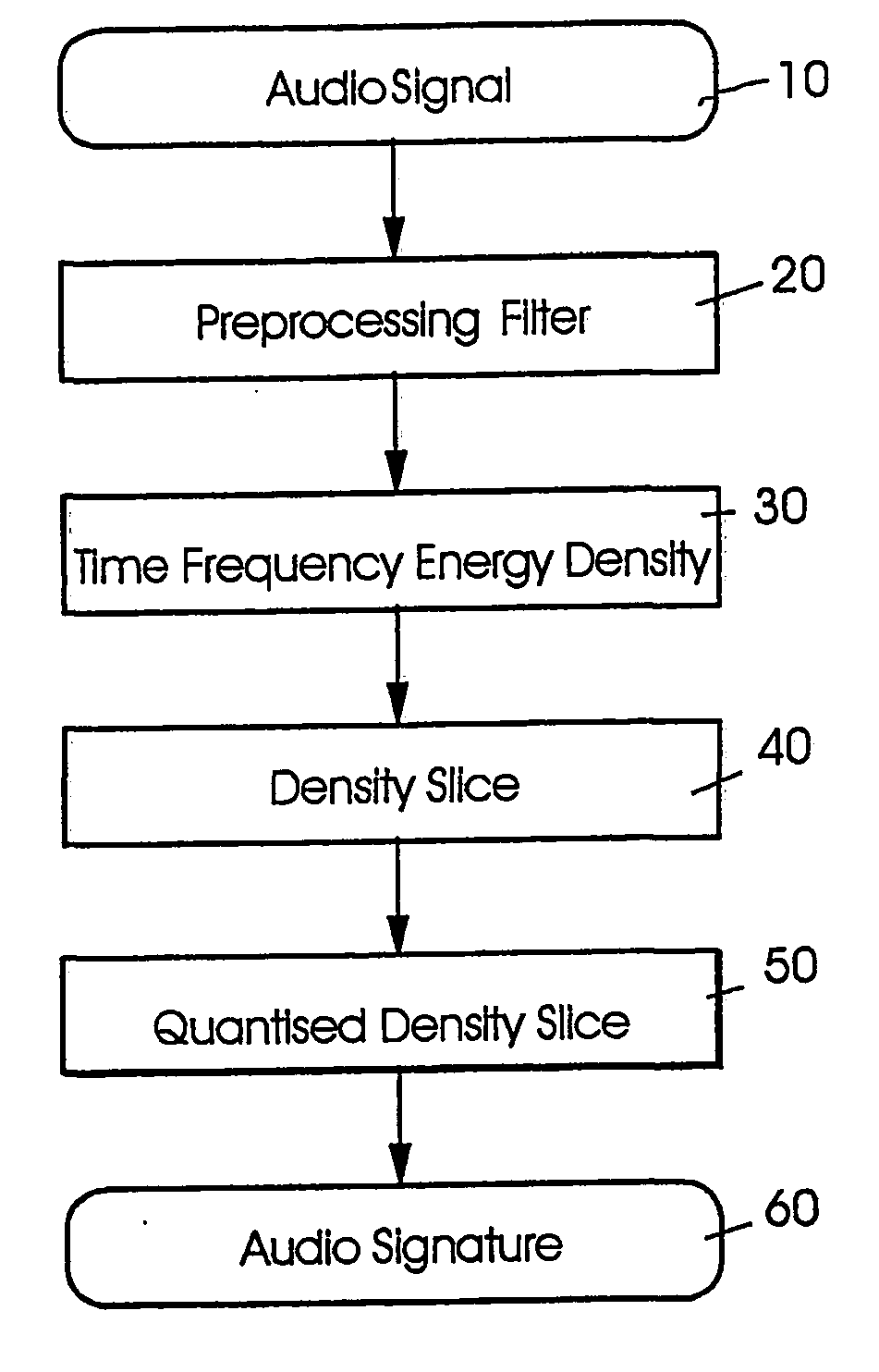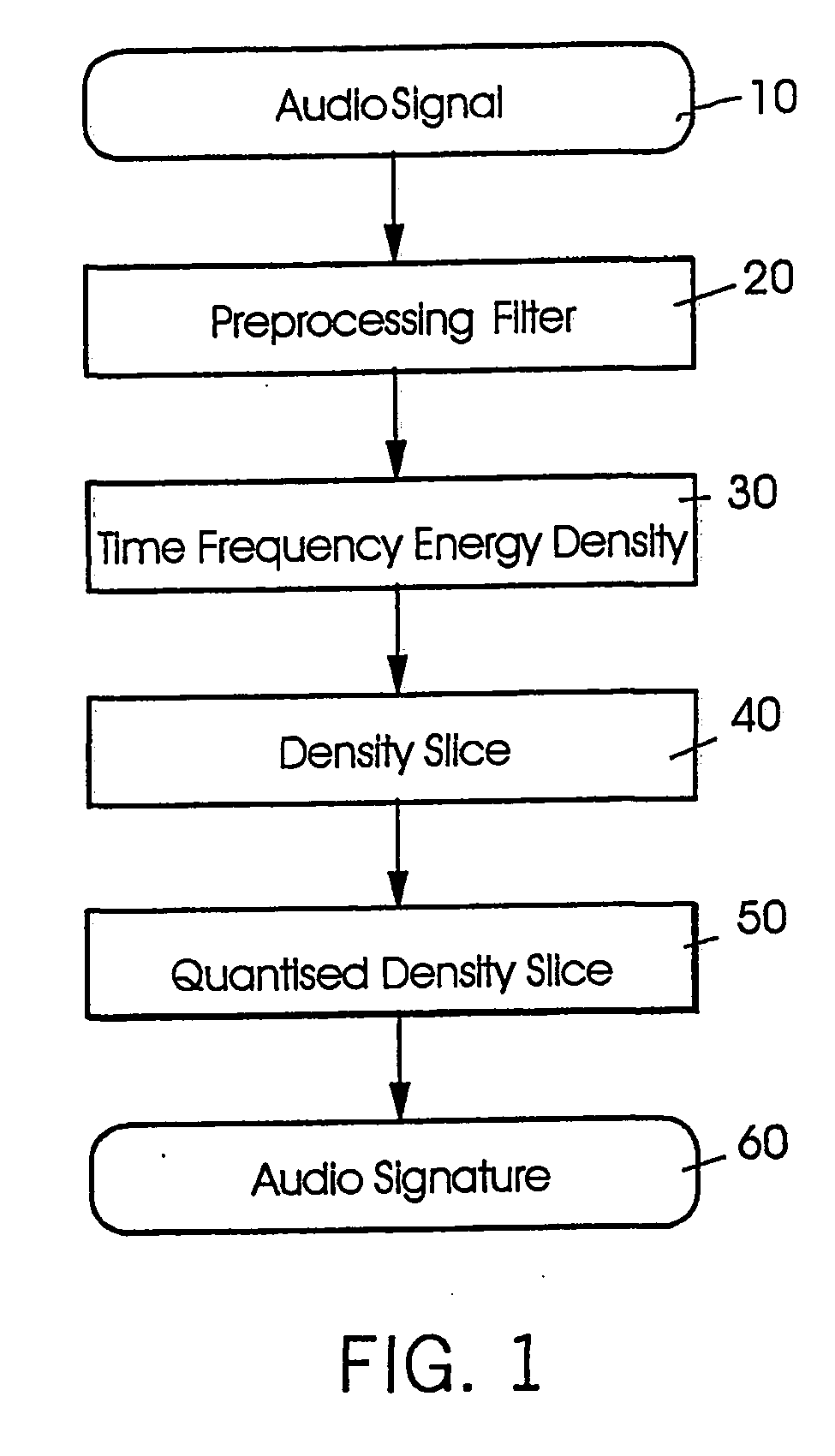Method and system for the automatic detection of similar or identical segments in audio recordings
a technology of automatic detection and audio recording, applied in the field of method and system for automatic detection of similar or identical segments in audio recordings, can solve the problems of sensitivity against local changes of audio data, and the inability of the method to distinguish between permutated recordings of the same material
- Summary
- Abstract
- Description
- Claims
- Application Information
AI Technical Summary
Benefits of technology
Problems solved by technology
Method used
Image
Examples
first embodiment
[0050] 1. First Embodiment
[0051] The first embodiment describes the application of this invention in the special case of density slices orthogonal to the frequency axis of the energy density distribution and a metric chosen to identify identical recordings. The energy density distribution is derived from the Gabor transform (also known as short time Fourier transform with a Gaussian window) of the signal. The embodiment compares an audio recording with known identity, called "master recording" in the following description, against a set of other audio recordings called "candidate recordings". It identifies all candidates that are subsequences of the original generated by applying fades or cuts to beginning or end of the recording but otherwise assumes that the candidates have not been subjected to transformations like e.g. frequency shifting or time warping.
[0052] 1.1. Preprocessing of the Master
[0053] The master recording is preprocessed to select the slicing planes for the energy ...
second embodiment
[0068] 2. Second Embodiment
[0069] The second embodiment describes the application of this invention in the special case of density slices orthogonal to the power axis of the energy density distribution. The embodiment compares one or more audio recordings ("candidate recording") with a template ("master recording") that contains the motif or phrase to be detected. Typically the template will be a time-interval of a recording processed by similar means than described in this emobidment.
[0070] Like in the first embodiment the time-frequency transformation used is the Gabor transform. The time-frequency density of a "candidate recording" is computed using logarithmically spaced frequencies from an appropriate interval, e.g. the frequency range of a piano. This logarithmic scale may be translated in such a way, that the frequency of the maximum of the energy density corresponds to a value of the scale. The time-frequency energy density such computed is sliced with a plane orthogonal to ...
PUM
| Property | Measurement | Unit |
|---|---|---|
| frequency | aaaaa | aaaaa |
| distance | aaaaa | aaaaa |
| energy density | aaaaa | aaaaa |
Abstract
Description
Claims
Application Information
 Login to View More
Login to View More - R&D
- Intellectual Property
- Life Sciences
- Materials
- Tech Scout
- Unparalleled Data Quality
- Higher Quality Content
- 60% Fewer Hallucinations
Browse by: Latest US Patents, China's latest patents, Technical Efficacy Thesaurus, Application Domain, Technology Topic, Popular Technical Reports.
© 2025 PatSnap. All rights reserved.Legal|Privacy policy|Modern Slavery Act Transparency Statement|Sitemap|About US| Contact US: help@patsnap.com



